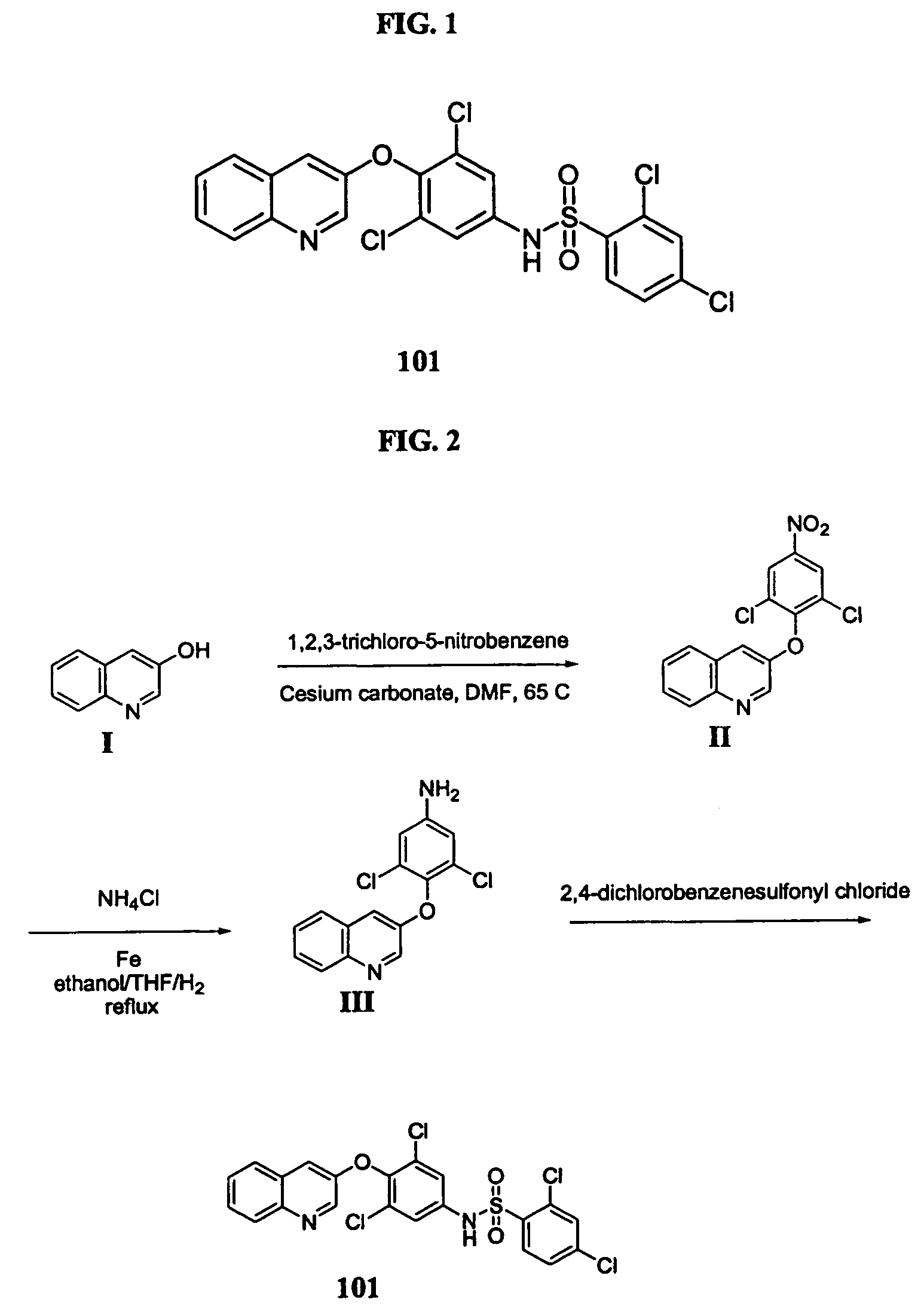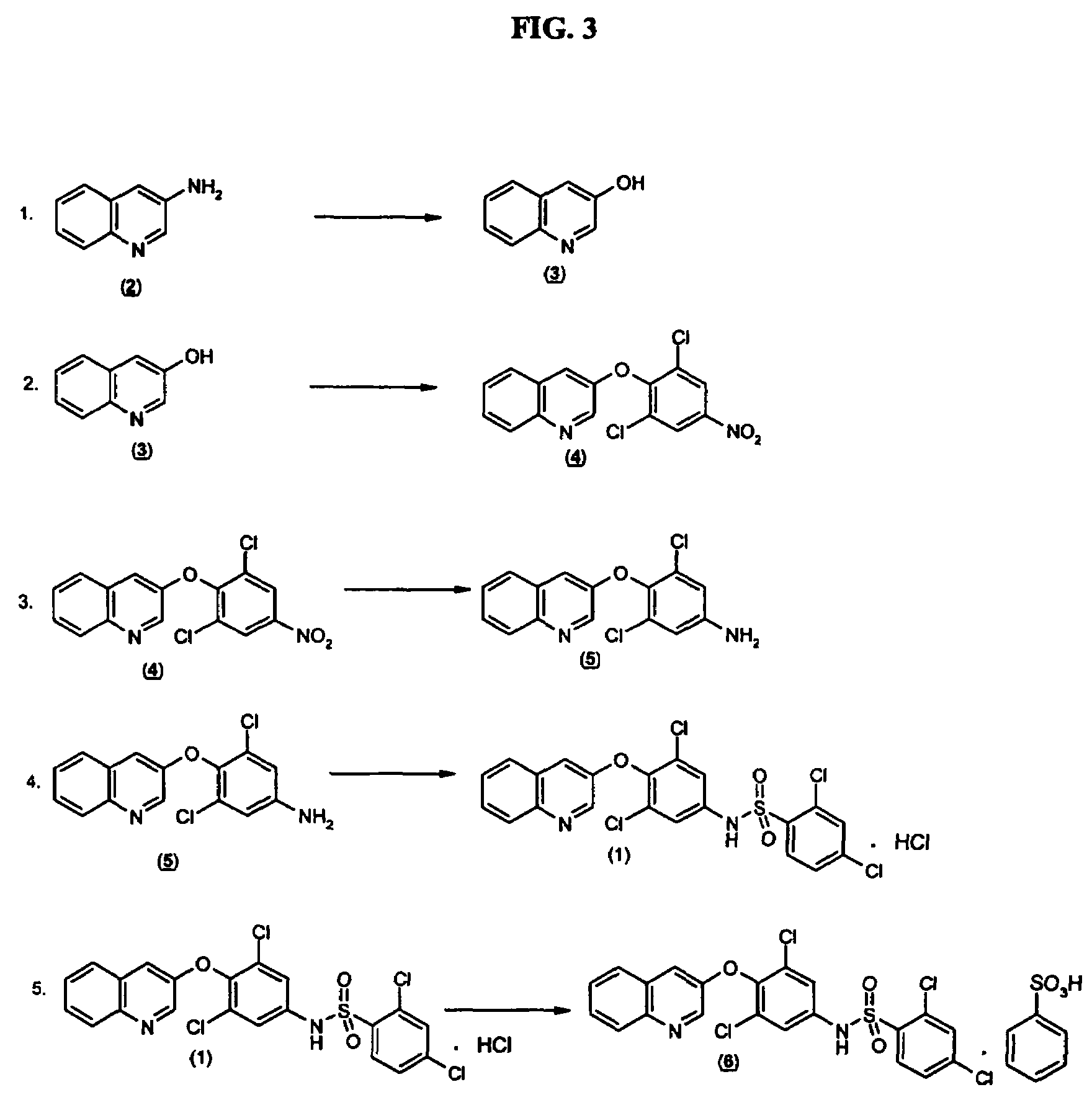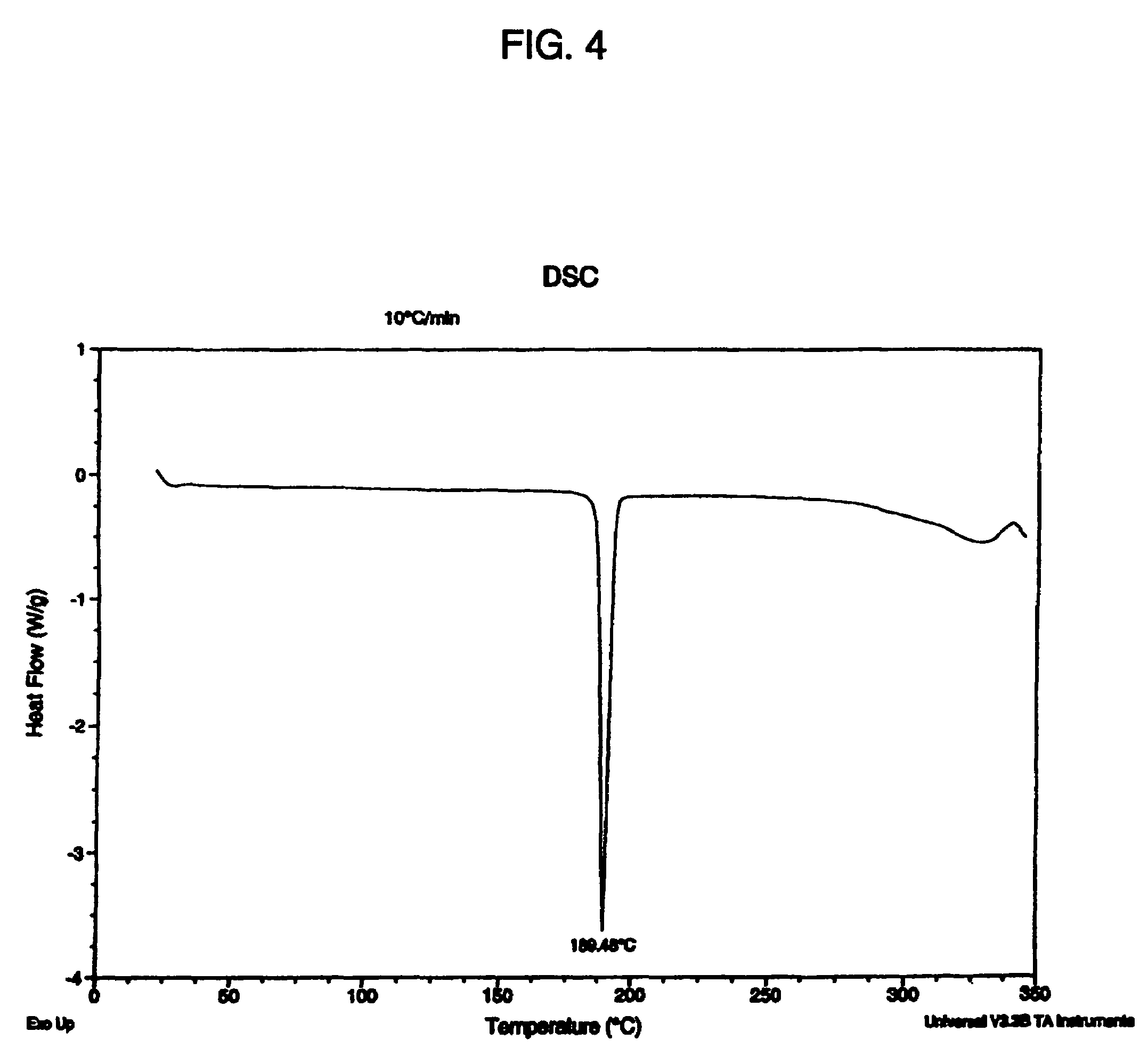Salts and polymorphs of a potent antidiabetic compound
a potent antidiabetic and salt technology, applied in the field of salts and polymorphs of potent antidiabetic compounds, can solve problems such as fatal overdosage of compounds
- Summary
- Abstract
- Description
- Claims
- Application Information
AI Technical Summary
Benefits of technology
Problems solved by technology
Method used
Image
Examples
example 1
7.1 Example 1
Synthesis of Compound 101
[0125]This example provides an exemplary synthesis of compound 101. Alternate methods of synthesizing compound 101, including methods of synthesizing acid addition salts of compound 101 are described below; still other alternate synthetic methods will be apparent to those of skill in the art.
[0126]
3-(2,6-Dichloro-4-nitro-phenoxy)-3,4-dihydro-quinoline (II)
[0127]3-Hydroxyquinoline (I) (prepared according to the procedure of Naumann et. al., Synthesis 4:279–281 (1990)) (3 g) and 1,2,3-trichloro-5-nitrobenzene (4.7 g) were dissolved in DMF (80 mL) and heated with cesium carbonate (7.4 g) for 2 h at 60° C. The reaction was poured into ice / water (500 mL). The resulting off-white precipitate was collected by filtration and rinsed with hexane to afford compound II as a solid (6.9 g) suitable for use in the next reaction.
[0128]1H NMR in CDCl3 δ 8.863 (d, J=2.2 Hz, 1H), 8.360 (s, 2H), 8.106 (d, J=8.6 Hz, 1H), 7.646 (m, 2H), 7.529 (d, J=8.6 Hz, 1H), 7.16...
example 2
7.2 Example 2
PPARγ Ligand Binding
[0133]Using methods similar to Lehmann et al., J. Biol. Chem. 270:12953–12956 (1995), compound 101, prepared according to Example 1, exhibited an IC50 of less than 1 μM in a PPARγ ligand binding assay utilizing [3H]-BRL 49653 as the radioligand.
example 3
7.3 Example 3
Crystallization of an HCL Salt of Compound 101
[0134]Compound 101 was recrystallized as an HCl salt. Compound 101 prepared according to Example 1, except that an SnCl2 reduction was used for reduction of compound II to compound III, was suspended in ˜3.5 L warm ethanol. About 240 ml 21% NaOEt in ethanol was added to form a complete solution. A solution of 145 ml of concentrated HCl (˜3eq) in 450 ml of ethanol was added to the warm solution and allowed to slow cool to room temperature. The solid precipitate was collected by vacuum filtration. The product was slurried in water (2 L) and recollected by filtration. After air drying, the product was dried under vacuum at 70° C. to constant weight of 311 g. The anyhydrous HCl salt of compound 101 was confirmed by NMR and CHN.
[0135]HCl salts of compound 101 formed small rhomboid crystals or needles. SEM showed plates or prismatic particles. DSC showed varying endothermal events of, for instance, 125.2, 161.5, 222.6, 190.3, 224....
PUM
| Property | Measurement | Unit |
|---|---|---|
| melting point | aaaaa | aaaaa |
| melting point | aaaaa | aaaaa |
| differential scanning calorimetry melting temperature | aaaaa | aaaaa |
Abstract
Description
Claims
Application Information
 Login to View More
Login to View More - R&D
- Intellectual Property
- Life Sciences
- Materials
- Tech Scout
- Unparalleled Data Quality
- Higher Quality Content
- 60% Fewer Hallucinations
Browse by: Latest US Patents, China's latest patents, Technical Efficacy Thesaurus, Application Domain, Technology Topic, Popular Technical Reports.
© 2025 PatSnap. All rights reserved.Legal|Privacy policy|Modern Slavery Act Transparency Statement|Sitemap|About US| Contact US: help@patsnap.com



